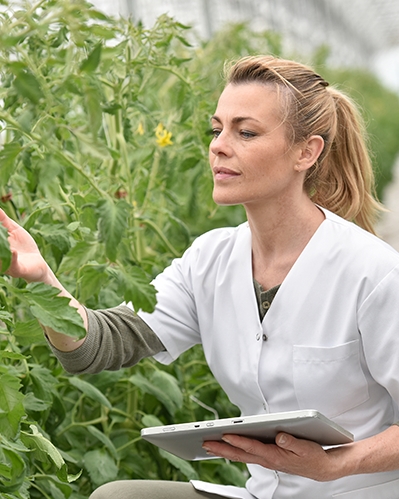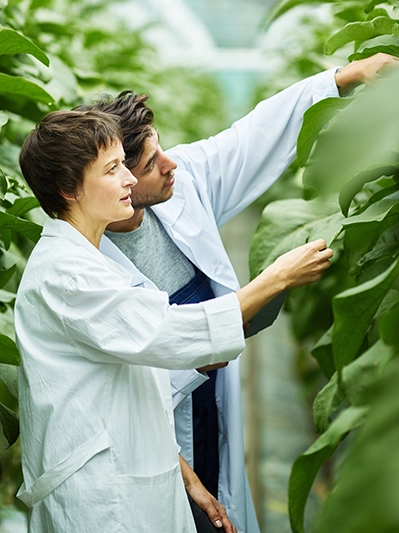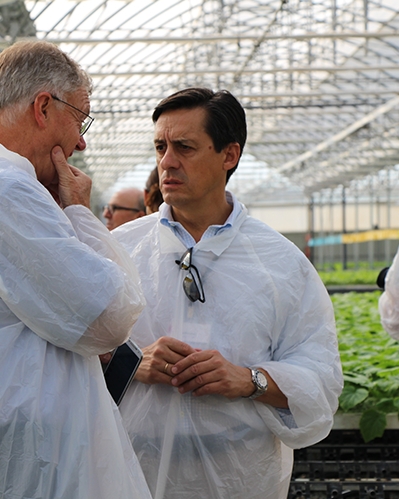Before any technology, any solution such as pesticides, biopesticides or genetically modified plants are available on the market they need to undergo strict evaluation by authorities to ensure that they have no unacceptable effects on the environment or human health.

It is considered one of the most stringent product approval processes in the world taking an average 11 years to take a product from discovery to commercial use. Most of the data submitted to the regulatory authorities is already available to the public.
Explore this website to find out more about where to find regulatory data and how CropLife Europe and its member companies are committed to enabling more public access to safety data related to their pesticides.
1. Where does regulatory data come from?
To register a pesticide, biopesticide or a genetically modified plant regulatory authorities require dozens of complex tests and more than 150 safety studies following strict procedures and protocols.
The generation of regulatory data continues even after product authorizations have been granted. This is due to requirements for the periodic review of authorizations, requests for post commercial monitoring data or additional data on product safety, and to changes in regulatory systems.


2. How can we trust the data?
Guidelines on gathering and analyzing safety data have been set by the Organisation for Economic Co-operation and Development (OECD), an international, intergovernmental organization.
The OECD has established Principles of Good Laboratory Practice (GLP), a management system which ensures the uniformity, reproducibility and integrity of laboratory studies around the world.
These guidelines are adopted and written into national laws, where any transgressions can lead to criminal prosecution.
Apart from pesticides and GMOs, GLP is a practice used to assess the safety of a wide number of common chemical products including pharmaceuticals, cosmetics and food additives.
3. A guide to finding existing safety data
A lot of health and environmental safety information is already made public through various channels, such as the product label, product brochures or company websites and peer-reviewed scientific literature. In addition, regulatory summaries are made available by government authorities.
In the EU, for example, the regulatory risk assessment and study summary for product applications is online with links to review reports and decisions. Further, the active substance registration reports containing the study summaries, risk assessment and summaries on scientific literature are published on the EFSA website.
There are similar portals in the US, Canada, Japan and elsewhere, and more information around pesticides can be found in The Pesticide Manual.


4. How to ensure innovation continues
The crop protection industry invests heavily in innovation to ensure safe and sustainable products are continuously being created and made available to farmers. Certain parts of the data submitted to approve new products is considered Confidential Business Information (CBI) – this ensures the incentive to innovate is protected. CBI might include details of the manufacturing process or the personal details of researchers and scientists.
Disclosing regulatory data which qualifies as CBI could significantly harm innovation by reducing competition and undermining the policy balance between the public’s interest in relevant health and environmental safety information, and competitive commercial interests achieved through the protection of regulatory data. The ultimate goal is to bring safe, effective and sustainable tools to farmers so they can grow a healthy crop.
5. The gateway to more safety data
CropLife Europe member companies are among the world’s leading developers of sustainable crop protection solutions which enable farmers to produce food for a growing world in a safe and environmentally sustainable way. While the product authorization process is the essential assurance to farmers and consumers that crop protection products meet the highest standards for safety, efficacy and quality, the effective transparency of safety data can further enhance public confidence in the process. That’s why in March 2018 CropLife Europe and its member companies launched their transparency commitment to make more safety-related data publicly available.
Also as from 2021, the content of technical dossiers for pesticides, biopesticide and genetically modified organisms will be made publicly available at the beginning of the evaluation process. This will gradually give access to the general public, but more importantly to the scientific and regulatory communities, to a vast amount of safety related data. We believe such transparency will benefit the evaluation process and enhance the risk assessment approaches.
